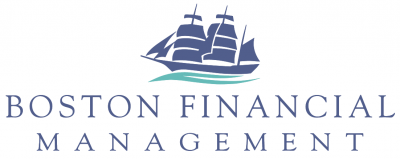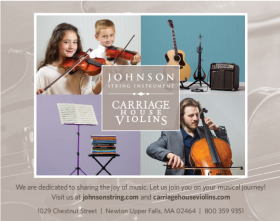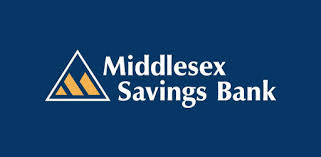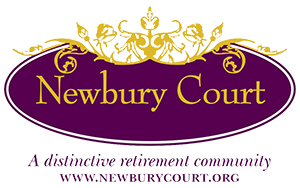Search
Friday, November 11, 2011, First Parish, Sudbury
Sunday, November 13, 2011, Old South Church, Boston
Canons 3 and 5, from the Goldberg Canons, BWV 1087 ............ J. S. Bach (1685-1750)
Fantasia, from Chromatic Fantasia and Fugue, BWV 903 ............ J. S. Bach
Musicalischer Circul ............ Johann Philipp Kirnberger (1721-1783)
Canons from the Musical Offering, BWV 1079 ............ J. S. Bach
Canon a 2 per Tonos
Canon a 2 cancrizans
Canon perpetuus
Trio Sonata in C Minor from the Musical Offering J. S. Bach
Largo • Allegro
Andante • Allegro
Intermission
La Gamme, en forme d’un petit Opéra ............ Marin Marais (1656-1728)
Ascending:
UT (Gay)
RÉ
MI (Plus gay–Rondement)
FA (Gay)
SOL (Gay)
LA (Gay–Gracieusment)
SI
UT (Gay–Louré)
Descending:
SI (Gravement–Rondement–Un peu plus gay)
LA (Plus lentement–Gracieusement)
SOL (Très gay–Légèrement-Lentement)
FA (Très légèrement)
MI (Rondeau–Gracieusement)
RÉ (Très vite–Allemende–Modérément)
UT (Gay–Un peu gay–Gay)
Suzanne Stumpf, traverso; Sarah Darling and Jesse Irons, violins
Daniel Ryan, cello; Michael Bahmann, harpsichord
Program Notes
Johann Sebastian Bach held a fascination for musical canons all his life, particularly late in his career. The famous 1746 portrait of Bach by Elias Haussmann shows him holding a small musical manuscript—a canon Bach composed as part of his application for membership with Mizler’s Academy of Musical Sciences. The canon in the portrait turns out to be a version of one of his fourteen “Goldberg” canons that were discovered in 1974. These canons are all based upon a section of the bass line of his Goldberg Variations theme and employ a myriad of canonic techniques including retrograde, inversion, augmentation, and diminution. The canons that begin our program use the Goldberg theme with its inversion (canon 3), to which a second canon is added employing this same technique (canon 5).
Bach’s interest in expanding the use of modulation to make use of remote keys is in evidence in much of his keyboard music from the Weimar and Cöthen periods, including his famous Chromatic Fantasia and Fugue, written around 1720 in Weimar. In this work, Bach’s rhapsodic passagework and arpeggiated chordal sequences take the listener on a harmonic journey through many keys often arrived at via strident diminished chords. Bach’s frequent venturing into remote keys was groundbreaking for his time and was made possible by the style of keyboard temperament he developed that allowed performance in all keys while retaining each key’s individual character.
Bach’s student Johann Philipp Kirnberger also took an interest in keyboard temperaments that enable performance in all keys, although Bach was known to have disagreed with many of his theories on the subject. Kirnberger was one of a number of composers who wrote musical circles, one-movement works that pass through all of the keys via the circle of fifths. His musical circle is unusual, however, in his nearly exclusive use of the minor mode in all keys.
The events surrounding the composition of the Musical Offering are among the most thoroughly documented of Bach’s life. Frederick the Great, King of Prussia, was a fine musician and flutist who held nearly nightly concerts at court. At Frederick’s invitation, Bach appeared at his court in Potsdam in May 1747 and was challenged to improvise on a theme composed by the King for this occasion. Upon return to Leipzig, Bach subsequently decided to expand on the project. The resulting Musical Offering consists of a thee-part ricercar (presumably Bach’s original improvisation), a six-part ricercar, various canons, and a trio sonata, all of which make ingenious use of the royal theme.
The canons of Bach’s Musical Offering were Bach’s final and most thorough foray into the canonc art. In the canon per tonos, Bach presents a canon at the fourth that features a built-in modulation that causes the canon to become a tone higher each time it is repeated. This perpetual canon could take the listeners and the players to the stratosphere, but in our performance the players have decided to ascend merely one octave. The canzicran (crab) canon is ingeniously written for one performer to read the music forward while the other simultaneously reads the music backwards. The canon perpetuus uses melodic inversion in the treble instruments over a freely-composed bass line.
The trio sonata was certainly a favored musical genre at Frederick’s court. In Bach’s Musical Offering trio sonata, he has skillfully built the work’s movements to incorporate the King’s theme, either verbatim, or by invoking its salient chromatic qualities. The theme is most obvious in the second movement where it appears unaltered as a cantus firmus in each voice successively, but more impressive is how Bach has incorporated its essence into four movements of completely different character. As this work is thought to be one of the most technically difficult pieces ever written for traverso, it can be surmised that Bach may have penned it as a special challenge back at the king.
Marin Marais’ La Gamme is an extraordinary work, unprecedented for its time. Based on a C major scale both on the micro and macro levels, the work’s continuous 894 measures are cast, as Marais states in the title, in the form of a small opera. The organization of the piece is announced in the opening measure with an ascending and descending C major scale; the piece is, in fact, infused with scalar passages throughout. The various sections of the work are written in the tonalities (both major and minor) of the notes of the scale. Linking the sections are modulatory passages which set the mood for the sections that follow. The work features a variety of musical moods and characters. Dance movements such as allemande, sarabande, louré, minuet, and gigue, are contrasted with operatically-inspired recit, Italianate virtuosity, imitative counterpoint, and sections of quintessentially French elegance.
Deliberate internationalism is evidenced both by the musical styles of this work and in Marais’ lengthy preface, presented in both French and Italian. The work is originally scored for violin, viola da gamba, and continuo. In his preface, Marais suggests alternative and expanded instrumentations to include a second violin, cello, and flute. In our performances we have utilized many of the optional instrumentations he suggests and have found that the broader instrumental forces colorfully contribute to expression and effectively support his conception of the work as un petit opéra.
© Daniel Ryan and Suzanne Stumpf











Daniel Ryan and Suzanne Stumpf, Artistic Directors
349 Boston Post Road, Weston, MA 02493
tel. (781) 466-6694
All content © Musicians of the Old Post Road
Privacy Policy
Terms & Conditions
